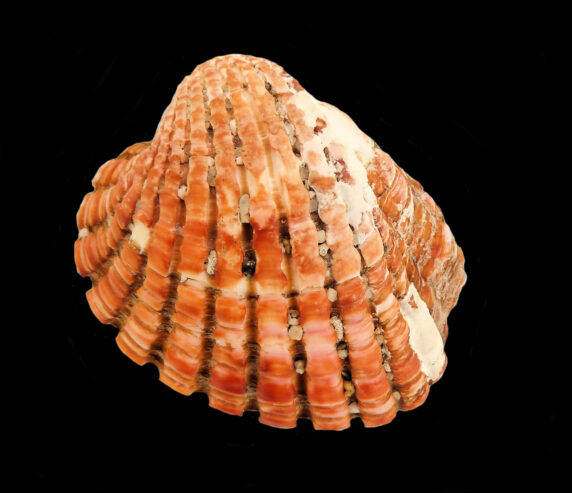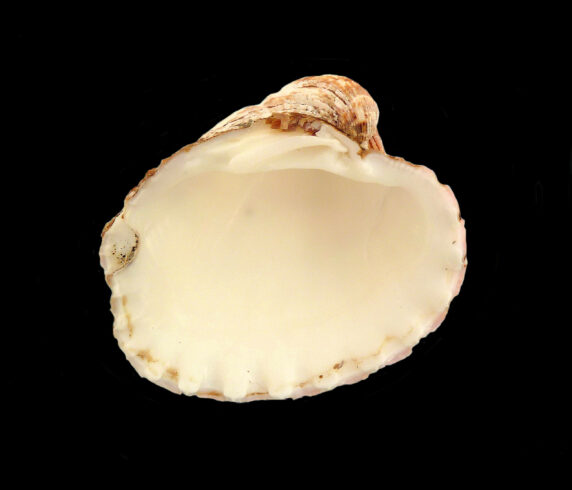Large-ribbed Cardita Shell, Cardites crassicostatus

 Large-ribbed Cardita, Cardites crassicostatus. Shell collected by the deepwater shrimp trawlers off the southwest coast of Baja California Sur, April 2010. Size: 6.5 cm (2.6 inches) x 6.5 cm (2.6 inches).
Large-ribbed Cardita, Cardites crassicostatus. Shell collected by the deepwater shrimp trawlers off the southwest coast of Baja California Sur, April 2010. Size: 6.5 cm (2.6 inches) x 6.5 cm (2.6 inches).
Phylogeny: The Large-ribbed Cardita, Cardites crassicostatus (G.B. Sowerby I, 1825), is a bivalve mollusk that is a member of the Carditidae Family of Little Hearts. The genus Cardites is one of thirty-seven genera in this family, and there are thirteen species in this genus. This species is also known as the Thick-ribbed Cardita.
Description: The Large-ribbed Cardita shell has a a rounded rectangular profile and is plump and equivalve (both valves equal in size and shape). The exterior displays 15-20 wide radial ribs, which terminate in a squared-off scalloping at the margin. The exterior of the shell is orange with white and brown blotches. The interior is white. The periostracum is thin, tan to dark brown, and often eroded. Large-ribbed Cardita shells reach a maximum of 6.8 cm (2.7 inches) in length and 6.8 cm (2.7 inches) in height.
Habitat and Distribution: Large-ribbed Carditas are found in rubble from the intertidal zone to depths up to 55 m (180 feet). They are a subtropical to tropical Eastern Pacific species. In Mexican waters they are found throughout the Gulf of California and south to Guatemala. They have not been documented to occur along the west coast of the Baja Peninsula however the shell photographed above was collected along the extreme southwest coast of Baja California Sur, documenting their presence in this area.
Ecology and Behavior: Large-ribbed Carditas are suspension feeders that feed primarily on planktonic algae and suspended organic matter. They are gonochoric and reproduce sexually, through broadcast spawning, with external fertilization. There is no mention in the available literature of them engaging in any types of parasitic, commensal, or symbiotic relationships. From a conservation perspective they have not been formally evaluated however they are fairly common with a relatively wide distribution and should be considered to be of Least Concern.
Synonyms: Cardita (Glans) sulcosa, Cardita cuvieri, Cardita michilini, Cardita sulcosa, Cardium locinoides, and Venericardia crassicostata.